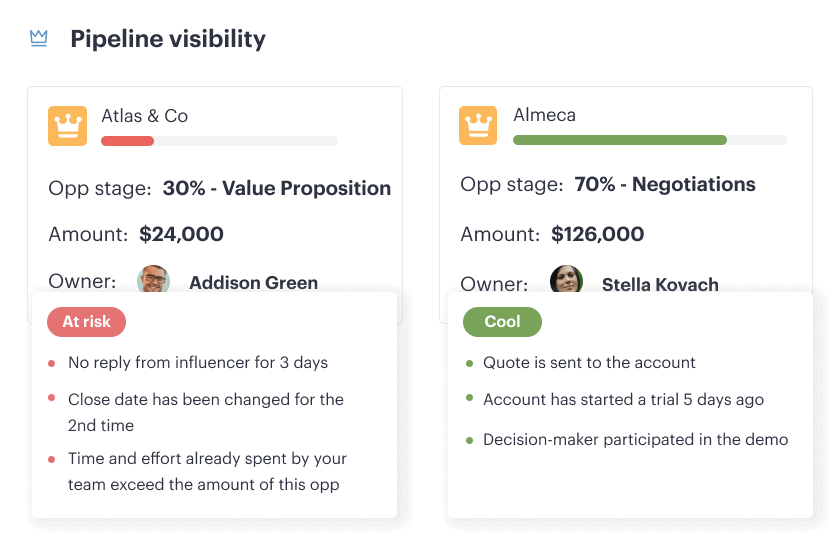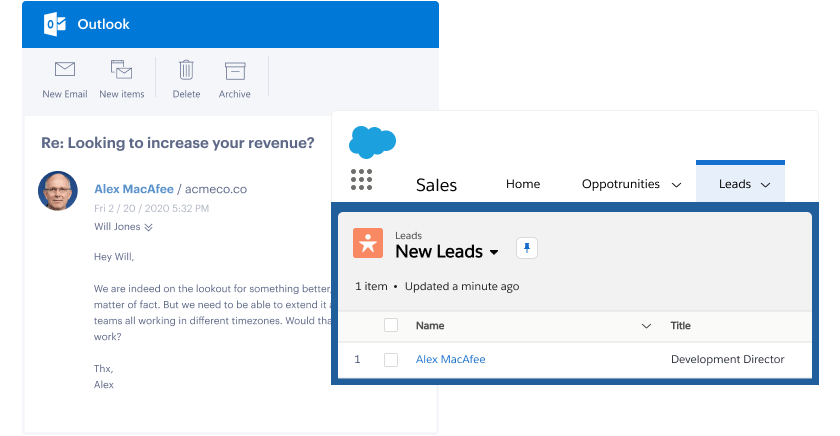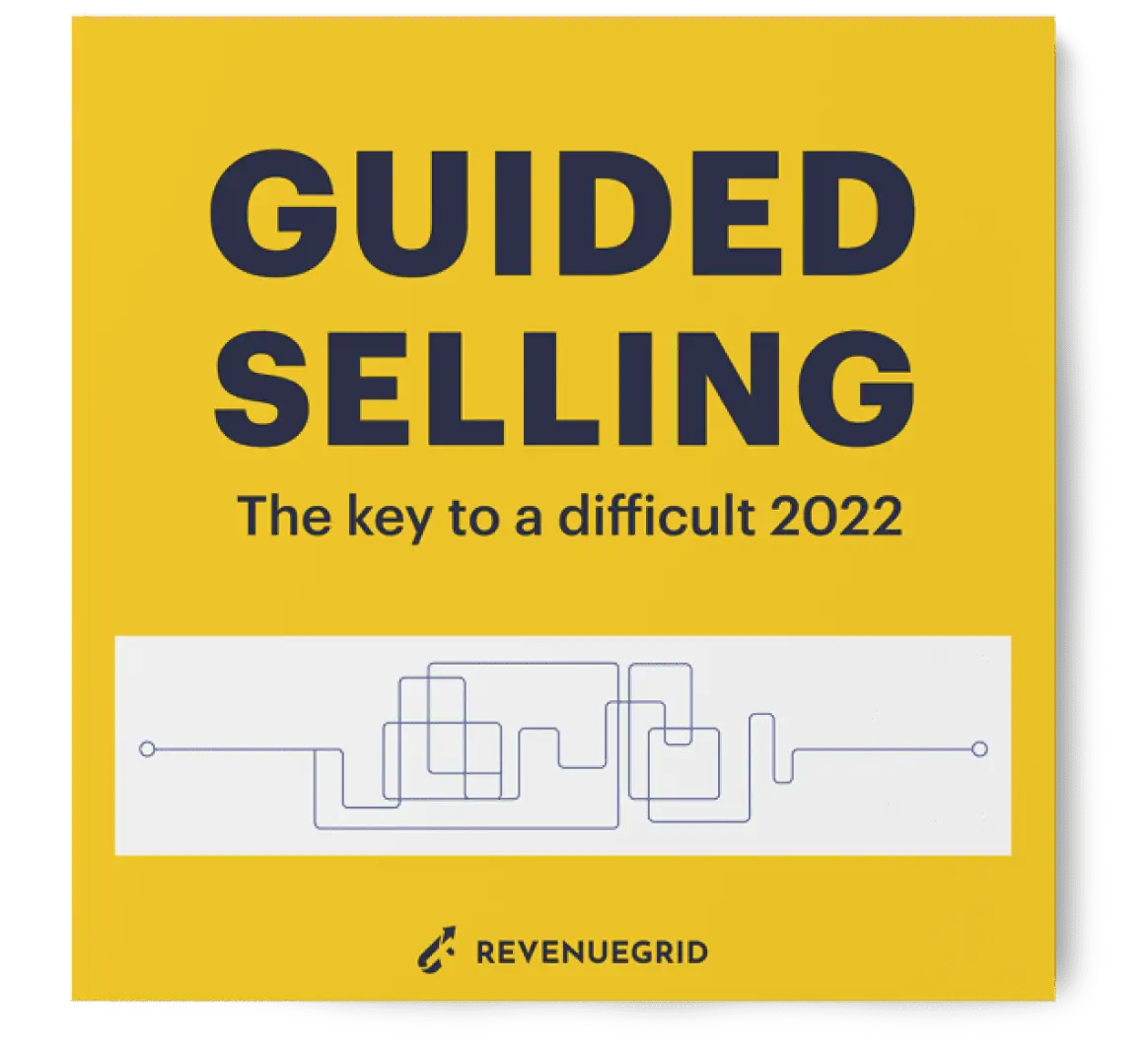Guided selling is a sales process designed to help reps navigate an increasingly complex sales environment, typically by bringing AI and machine learning into the sales stack.
In a nutshell, from the B2C side guided selling is the e-commerce experience: the software guides the customer to purchase the required product or service.
Such sales methodology fits any sales category both in B2B and B2C market environments. It means that guided selling covers a large spectrum of areas, including e-commerce, brick-and-mortar business, online sales, etc.
While guided selling definition spans a diverse range of tools and processes, the goal is to help sellers engage with buyers as efficiently and effectively as possible.
Today’s sales reps juggle a long list of tasks from prospecting and lead nurturing to cold outreach and social selling that together, make it easy for buyers to buy.
The point is, reps need all the help they can get.
In this article, I’ll explain what exactly guided selling is, how it works, and from there, share some examples that highlight the value it brings to the table.
What is Guided Selling?
Guided selling is a seller-centric process, typically implemented as software, designed to guide sellers through the entire sales cycle and increase pipeline visibility, enabling reps to consistently close deals faster and with fewer missteps.
While you might think of guided selling as a type of product or feature, it’s really more of a system for using data to enhance sales productivity. Much like sales enablement, guided selling meaning is less about specific tools or underlying technologies and more about helping sellers become more effective.
That said, there’s an important distinction between the two terms. Sales enablement describes a framework for providing sellers with the processes, knowledge, and tools needed to work effectively.
AI guided selling is part of a broader enablement strategy that uses technology to equip sellers with specific information during the sales process that enables them to work faster, effectively engage buyers and make better decisions.
It’s worth noting that there’s often some confusion about the definition of guided selling, as the concept has evolved and expanded over time. Initially, the term was used to describe a category of e-commerce solutions designed to guide consumers through the buying process without any sales rep involvement.
Today, guided selling B2B generally refers to B2B solutions that help sales reps sell to buyers, recommending the best content, actions, and communication tactics for any given sales situation.
Guided selling in B2B: how it works?
Top intelligent guided selling platforms use AI to transform raw data into valuable insights, leverage machine learning algorithms to guide reps through the sales process, and recommend actions based on data, not best practices or gut instinct.
While every tool is different, guided selling solutions are similar to the recommendation engines you’ll see on platforms like Amazon or Netflix, which use historical data, demographic information, behaviors and other insights to recommend products or content to users.
Leading tools help organizations capture the value hidden in growing data sets, using AI and machine learning to capture, clean and analyze data before recommending the best course of action.
Built-in AI is used to identify relationships between actions and results, analyzing historical performance insights against buyer behaviors, demographics, firmographics, market conditions and other relevant data points.
Guided selling: how it works in B2C or e-commerce
However, in e-commerce, many retailers forget about the importance of providing proactive assistance to customers. But, the benefits of guided selling remain clear. Guided selling system in B2C reduce the time and efforts required from the shopper to purchase your product or service. As we live in a world, where time is scarce, convenience and positive customer experience are the key elements of the successful offering in e-commerce. When implemented correctly, guided selling substantially grows the conversion rates, reducing the choice-paralysis for e-commerce customers.
Guided selling examples
1. Automate playbooks to support consistent sales performance
Guided selling begins with a strong foundation of methodologies, blueprints and plays.
You’ll want to find a solution that makes it easy for sellers to follow along with the plan and reliably move deals forward.
Revenue Grid allows you to automate the sales process based on the activities defined by your playbooks and methodologies. Admins can set up Revenue Signals and connect them to specific actions, as below.
Additionally, sellers can see the next steps scheduled for each active deal, the estimated close date based on deal progress and the time and effort they’ve invested thus far.
2. Responds in real-time
An effective guided selling platform must be adaptive and dynamic, responding to changing circumstances in real-time.
This has a bearing on many aspects of the deal cycle. At the most basic level, keeping reps on the ball with communications and other sales activities cuts the hours and days off of deals that add up to higher revenue velocity.
In other situations, real-time information can be the difference between wins and losses. It wasn’t so many years ago that the sales community recognized the difference in conversion rates associated with lead response time—responding to leads within minutes instead of hours vastly increases the likelihood of a sale.
The reality is that there are many time-sensitive turning points throughout each deal. Imagine a situation where a prospect mentions that their company has specific technical requirements. Who is more likely to keep the deal on track—the rep that has industry-specific training reminders and content on hand, or the rep that follows up later? The rep that promises to follow up later is essentially inviting the prospect to set up a call with the competitor.
Whether additional stakeholders enter the mix at the last second, requirements change, or there’s an unforeseen shift in market conditions, reps and leaders should know immediately. That way, they can respond quickly and keep deals on track and moving at top speed.
3. Provides total visibility into the pipeline
Guided selling should also provide complete visibility into the sales pipeline, allowing reps and managers alike to size up pipeline status, identify & act on opportunities and revive at-risk deals–fast.
Revenue Grid includes a process audit feature–designed to reveal what’s working–or not in your current sales process.
Users can analyze customer engagement using a visual heatmap to track interest over time.
Sales managers and coaches also receive a complete picture of team activity and can quickly analyze individual performance against how reps spend their time.
4. Integrates with your sales stack
According to the Miller Heiman Group, the average sales stack includes 10 different tools. As such, you’ll want to make sure that you choose a guided selling solution that syncs with all of the tools you use each day.
Integrations are critical to guided selling, as efficacy hinges on providing the software with a complete picture of everything that could potentially impact a deal.
For example, if your guided selling software syncs to your CRM and sales communications but not content usage/engagement analytics, sellers don’t have any way of knowing which sales collateral is most effective at each stage.
The more data you can feed into the platform, the better.
Over time, the guided selling technology will learn from historical data and serve up the training sessions, content and recommended next steps most likely to yield the desired outcome based on contextual clues.
Additionally, integrations also allow sellers to save time.
For example, Revenue Guide’s Salesforce integration automatically syncs communication records back to the CRM, automatically creating new leads and updating existing records, eliminating the need for double data entry.
5. Guided selling e-commerce example
Consumers often struggle where to begin in the online purchase especially when they are searching for big-ticket items like furniture. With guided selling, e-commerce retailers can educate their customers and lead them through the sales process. Let’s explore the key best practices in e-commerce guided selling using several simple examples:
- Place your product into the virtual environment – if the shopper comes to the online decor store he is overwhelmed with various decor options. Here, the online decorating tool helps the customer to place various decor elements within the visualization of his home and see whether they fit his interior design.
- Display live recommendations from experts – if the customer comes to the beauty store and wants to purchase specific products, a guided-selling tool can help to select from a range of characteristics, including hair color, skincare, and hair issues. Such a tool can also use the recommendations of the beauty experts to guide the shopper in a proper way and gather his personal information for future reference
- Educate the customers – when the purchaser meets with the product for the first time and this product has some complicated technical characteristics the guided selling is the perfect framework to teach the customer about the important terminology. Coming back to the decor store example, the right tool can compare various decor items and help shoppers to choose products that might appear too similar at a glance.
Best guided selling tools
Below, I’ve shared some examples of tools that guide sellers through the sales process.
While this isn’t an exhaustive list, this selection showcases how different guided selling solutions use technology to support the sales process in different ways.
Aviso guided selling
Price: Contact Aviso for quote
Aviso overview. Aviso is an AI-driven guided selling platform designed to help sales teams close more deals, set goals, collaborate on deals and improve forecasting accuracy.
This platform is designed more for business leaders than individual reps focused on the high-level strategic planning and forecasting that determine quotas and goals–as well as the plays and methodologies reps use to achieve target objectives.
How does Aviso work? Aviso gathers signals from your CRM, communications records, customer data systems, along with external market intelligence–enabling the platform’s built-in AI to prescribe actions based on both implicit and explicit behaviors.
Key features:
- 360-degree view of internal workflows. allowing sales leaders to analyze the sales strategy, methodologies, content and team performance–and from there, allocate resources toward the activities with the greatest impact on revenue, growth or retention.
- Predictive forecasting. Aviso offers a variety of machine learning pipelines that automatically ingest and map data from connected sources, train forecasting models and make ongoing predictions for a variety of potential scenarios.
- Statistical scoring. Aviso AI applies ML models to score each opportunity in the pipeline, analyzing data captured throughout the sales cycle along with values sourced from CRM objects and other relevant data points to identify attributes that stand in the way of closing. This helps managers focus on improving specific behaviors to increase the chances of securing a win.
Kiite: guided selling software
Price: Free version with limited features, paid plans start at $20/user per month.
What is Kiite? Kiite is an AI-driven playbook builder and content management platform designed to help sales teams capture, organize, and share knowledge, training content and sales collateral.
How does it guided selling tool work? Kiite automatically surfaces insights from connected data sources–training documentation, knowledge base posts, buyer interactions (think chat logs or email) or interviews with subject matter experts and turns them into information cards, which can then be used to create custom playbooks and training content.
Kiite’s key features include:
- Capture valuable knowledge. The web-based app captures, organizes and delivers valuable knowledge sourced from internal documents, videos, recordings, communication records and other connected data sources.
- Build custom, AI-enabled playbooks. Kiite’s AI-powered playbook builder allows users to quickly assemble playbooks for different situations by mapping content and cards to specific personas, workflows and segments.
- Centralized knowledge hub. Kiite enables users to access all playbooks, information cards and assets from connected content repositories from one dashboard view
- Deliver content at the right moment. Deliver bite-sized lessons and deal-specific plays to reps when they need it–allowing them to apply relevant knowledge to their current circumstances.
LevelEleven: guided selling tool
Price: Contact company for quote
LevelEleven overview. LevelEleven is geared more toward rep development and training. It’s a performance management system that reinforces key behaviors by giving managers and coaches actionable data for motivating and engaging sellers.
How does it work? LevelEleven tracks KPIs in real-time and provides performance summaries and real-time alerts so that managers and individual reps can identify and fix issues as they emerge–keeping the team on track to hit their targets.
LevelEleven features:
- Performance scorecards. Scorecards identify the behaviors that drive revenue and track performance based on the KPIs that matter most. Reps and managers can also track performance stats against goals to ensure they’re moving in the right direction.
- Focus box. The platform’s Focus Box feature tells reps exactly which activities they should focus on using real-time data to determine what’s most important in the moment.
- Sales gamification features. Real-time leaderboards, gamification features and broadcasts real-time performance data to encourage healthy competition among reps.
- Early warning system. LevelEleven keeps sales managers in the loop by automatically notifying leaders when they need to course-correct rep behavior, reducing the amount of time spent monitoring dashboards manually and data-driven coaching recommendations.
Revenue Grid: guided selling
Price: Contact Revenue Grid for a quote.
Revenue Grid overview. Revenue Grid is an AI-enabled guided selling platform designed to help sales teams gain full visibility into their pipeline and activity metrics, by providing sellers with real-time signals on what actions bring the best results, what deals are at risk and what steps to take now.
How does it work? This suite of tools allows organizations to set up custom Revenue Signals and match them to specific actions, as defined in their sales playbooks and methodologies. The platform proactively recommends actions and content, helping reps deliver more consistent wins and avoid the missteps that put deals at risk.
Additionally, Revenue Grid provides complete pipeline visibility, allowing users to understand why certain deals glide through the sales funnel, while others stall or drop out altogether.
The benefit here is, teams can identify at-risk deals, and get them back on track, refine their sales plays and create more relevant content.
Key features:
- Automated data capture. Gather critical insights on active deals, leads, and prospects at key touchpoints in the buyer’s journey.
- AI-powered insights. Revenue Grid AI analyzes data across all integrated sources and surfaces correlations and patterns linking sales activities with win rates, allowing users to understand the factors that move deals forward.
- Guided selling. AI joins forces with proven sales strategies, recommending the best course of action to sellers in context.
Revenue Grid is a guided selling solution–designed to align sales staff around one unified, data-driven strategy. Learn more about the full platform here or sign up for a free trial to see it in action.
Read also:


